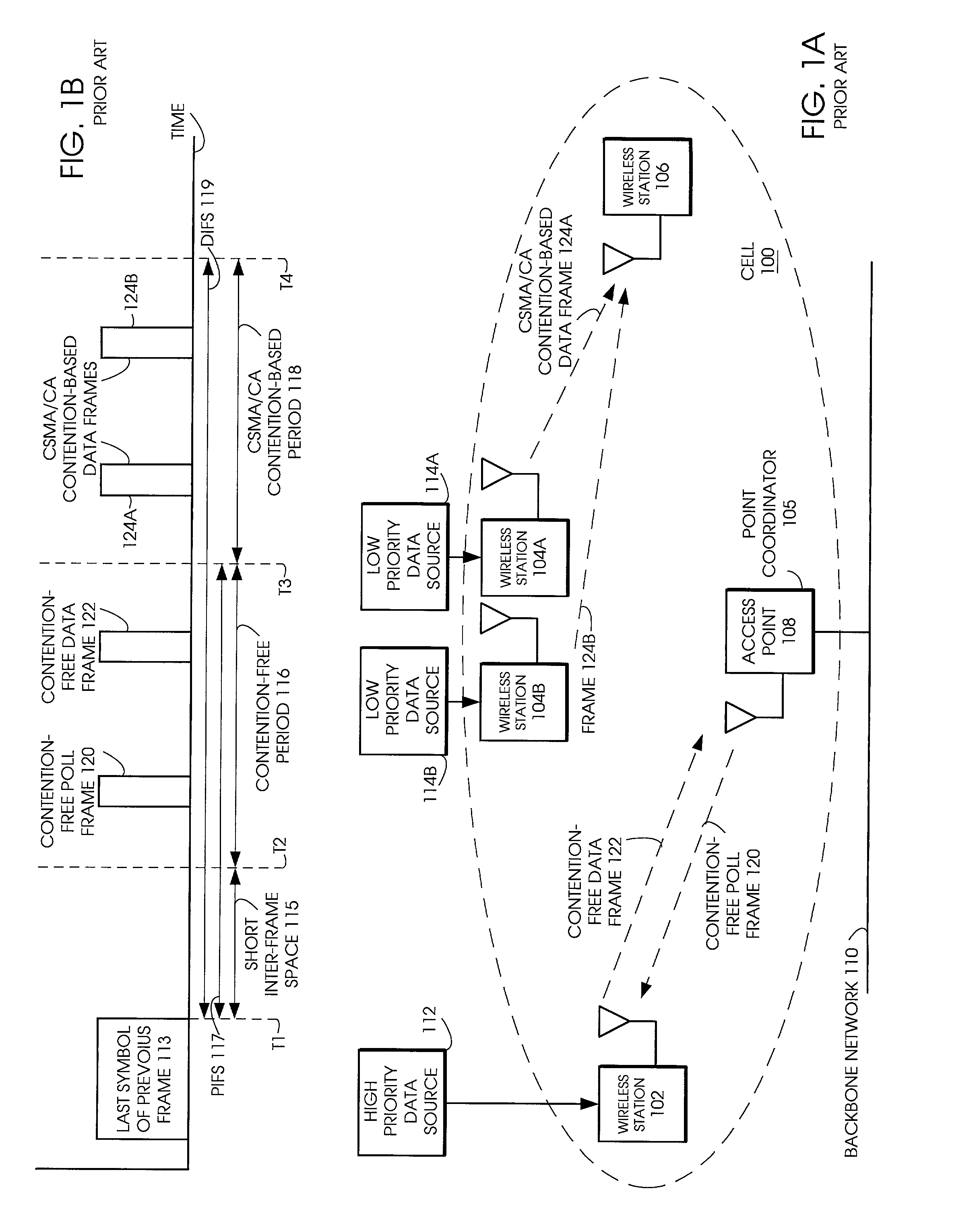Tiered contention multiple access (TCMA): a method for priority-based shared channel access
- Summary
- Abstract
- Description
- Claims
- Application Information
AI Technical Summary
Benefits of technology
Problems solved by technology
Method used
Image
Examples
example
[0253]The following example illustrates how the retrial backoff range can be adjusted to reflect traffic QoS characteristics. The rules for obtaining a new backoff range, (aLower[y],aUpper[y]), are the following:[0254]with each retrial, keep aLower[y] fixed,[0255]adjust aUpper[y] by increasing the contention window by a persistence factor pW[y] that depends on the class y, while[0256]imposing an upper bound CWmax[y] +1 on the contention window size, which is class dependent.
[0257]Consider now two classes, one receiving voice (VO) packets that require latency not exceeding 10 ms, and the other receiving video (VI) packets with a 100 ms maximum latency limit.
[0258]The following parameters are assigned to VO:
[0259](The restriction to be no less than 1 is imposed on the lower bound of the backoff range in order to ensure backward compatibility with legacy stations.)[0260]UAT[VO]=PIFS[0261]rLower[VO]=1[0262]rUpper[VO]=15[0263]pW[VO]=1[0264]CWmax[VO]=15
[0265]The following parameters are a...
PUM
 Login to View More
Login to View More Abstract
Description
Claims
Application Information
 Login to View More
Login to View More - R&D
- Intellectual Property
- Life Sciences
- Materials
- Tech Scout
- Unparalleled Data Quality
- Higher Quality Content
- 60% Fewer Hallucinations
Browse by: Latest US Patents, China's latest patents, Technical Efficacy Thesaurus, Application Domain, Technology Topic, Popular Technical Reports.
© 2025 PatSnap. All rights reserved.Legal|Privacy policy|Modern Slavery Act Transparency Statement|Sitemap|About US| Contact US: help@patsnap.com



